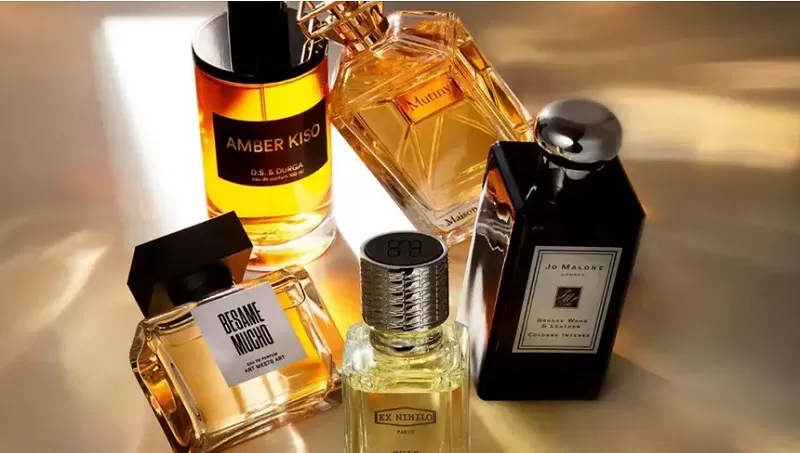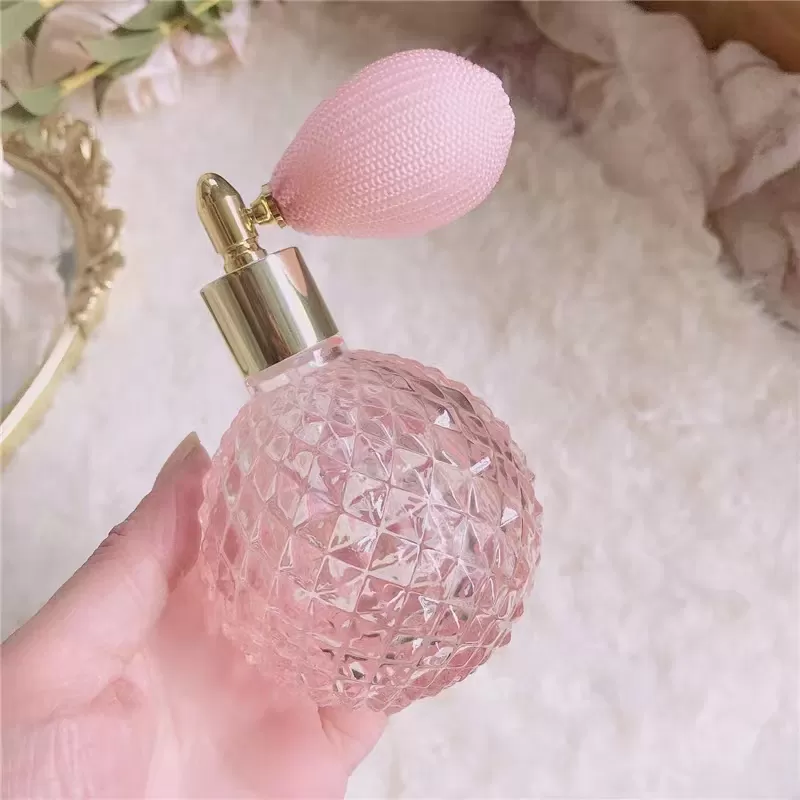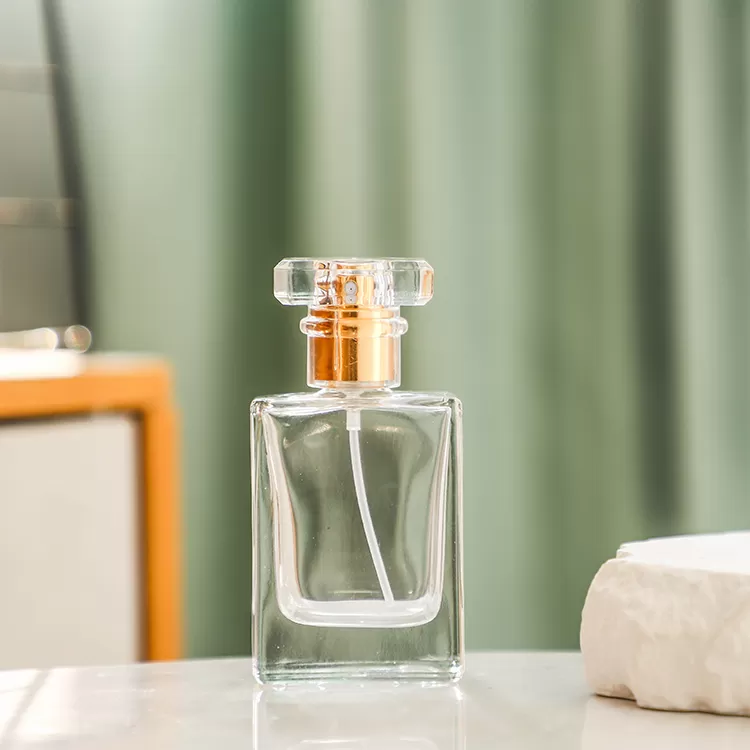Perfume Bottle Production process&Characteristics &Requirements
01-07-2025
As the carrier of perfume products, perfume bottles not only protect the quality of perfume in terms of function, but also play a role in enhancing brand image and attracting consumers in terms of appearance design. The production process of perfume bottles involves multiple links, from design to production, to packaging and transportation, all of which require strict process and quality control. This article will introduce the production process, characteristics and requirements of perfume bottles in detail to help everyone better understand this delicate and complex industry.
1. Design of perfume bottles
The design of perfume bottles is the first and most critical step in the entire production process. Good design can not only protect perfume from the influence of air and light, but also attract consumers' attention through visual effects. The design of perfume bottles usually includes the following aspects:
Bottle shape design: Bottle shape is one of the most important parts in perfume bottle design. Perfume bottles of different brands and series have different designs. Bottle shapes can be simple and elegant, or complex and luxurious. The design of the bottle shape should take into account factors such as the volume of the perfume bottle, the stability of the bottle mouth and the bottom of the bottle.
Material selection: Perfume bottles are usually made of glass, plastic, metal, ceramic and other materials. Glass bottles are widely used in the high-end perfume market due to their excellent light transmittance and high-end feel. Designers should consider the aesthetics, practicality and cost of perfume bottles when choosing materials.
Design of nozzle and bottle cap: The nozzle and bottle cap are important components of perfume bottles. The design of the nozzle determines the spraying effect of the perfume, and the bottle cap directly affects the beauty of the entire bottle. The design of the nozzle requires delicateness and can provide a uniform spray effect. The bottle cap needs to be tightly sealed to prevent the perfume from volatilizing.
Logo and decoration: The brand logo and decorative patterns on the perfume bottle are also important components of the design. These elements are not only for decoration, but often convey the brand's concept and personality.

perfume glass bottle
2. Production process of perfume bottles
The production process of perfume bottles is divided into several main stages, each of which has strict process requirements to ensure the quality and sophistication of the final product.
1. Mold making
The production of perfume bottles first requires the production of molds according to the design drawings. The production of molds requires high precision, and any small errors may affect the quality of the final product. Molds are usually processed by professional mold factories and made of metal materials. The mold production cycle is long and the cost is high, but it directly affects the production efficiency and the quality of the finished product.
2. Glass melting and blowing
The body of the perfume bottle is usually made of glass, and the production of glass bottles is generally completed through melting and blowing technology. The first step in the production process is to melt the glass raw materials into liquid glass at high temperature. Then, the molten glass is blown into the pre-made mold using a blower to form the basic shape of the perfume bottle.
3. Cooling and solidification
After the shape of the bottle is formed, it needs to be cooled and solidified. The cooling process requires temperature control to avoid cracks or bubbles on the glass surface. After cooling, the shape of the glass bottle is basically fixed, but the surface of the perfume bottle is still relatively rough at this time, and the final processing has not been completed.
4. Surface treatment
The surface treatment of the perfume bottle is to improve its appearance quality and feel. Common surface treatment processes include:
Sandblasting: Through the sandblasting process, the surface of the bottle body presents a frosted effect, which can not only enhance the texture of the bottle, but also avoid reflecting light.
Polishing: Through mechanical polishing, the surface of the bottle body is made smoother and flatter, and the glossiness is increased.
Spraying and painting: spray or spray paint the bottle body to give it color and pattern, making it more personalized and unique.
5. Bottle mouth and bottle cap assembly
The bottle mouth is a very important part of the perfume bottle, and its design directly affects the closure and spraying effect of the perfume. At this stage, the production line assembles the bottle cap, nozzle and bottle body to ensure that each component can fit tightly to prevent leakage. The installation of the nozzle is generally completed automatically, and the nozzle and the bottle body are seamlessly connected by precision equipment.
6. Quality inspection
Each batch of perfume bottles needs to undergo strict quality inspection during the production process. This includes checking whether there are any defects in the appearance of the bottle body, whether the sealing between the bottle mouth and the bottle cap is intact, and whether the bottle meets the design requirements. Common quality problems include bubbles, cracks, uneven bottle mouth, etc.
7. Packaging and transportation
Perfume bottles that have passed the inspection will enter the packaging stage. Packaging is not only to protect the safety of the perfume bottle during transportation, but also to consider the aesthetics for market sales. Perfume bottles are usually placed in special paper boxes, plastic bags or foam boxes to ensure that they will not be damaged during transportation.

3. Characteristics of perfume bottles
The characteristics of perfume bottles are reflected in their design, materials, production processes and other aspects. The following are some of the key features:
Exquisiteness and beauty: As the packaging of high-end consumer goods, the appearance design of perfume bottles is often an important factor for consumers to choose to buy. The lines, colors, shapes, decorations, etc. of the bottle body need to be carefully designed and polished.
High sealing: Perfume bottles must have good sealing to prevent perfume from evaporating or deteriorating. The joint between the bottle cap and the bottle body needs to be tightly sealed to prevent air from entering the bottle.
Suitable capacity and shape: The capacity of perfume bottles is usually between 30ml and 200ml. Depending on the positioning and market demand of different perfume brands, the size of the capacity and the design of the bottle type will vary. The bottle design needs to conform to people's usage habits, such as comfortable handholding and uniform spray effect.
Choice of material: Glass bottles are usually used for high-end perfume products, while plastic bottles are common in more economical perfume products. Although glass bottles are more luxurious, they are fragile; while plastic bottles have higher resistance to falling and lower production costs.
IV. Requirements for perfume bottle production
Quality control: The production process of perfume bottles requires strict quality control. Every link from raw materials to finished products needs to be strictly inspected to ensure that the products are flawless and meet standards.
Environmental protection and safety: The production of perfume bottles needs to meet environmental protection requirements, avoid the use of harmful substances, and take into account the safety of consumers. For example, the design of the bottle cap needs to prevent children from accidentally opening the bottle mouth to avoid perfume leakage.
Production efficiency: The production cycle of perfume bottles is usually short, but due to its high-end positioning, every step in the production process needs to be meticulous to ensure that each bottle can meet high standards.

Conclusion
The production of perfume bottles is not just a simple manufacturing process. It involves the combination of art and technology. The selection of materials, the innovation of design, and the refinement of technology all affect the quality and market performance of each perfume bottle. As consumers have higher and higher requirements for the appearance of perfume bottles, the design and production of perfume bottles will become more diversified and refined, and continue to promote the development of the perfume industry.








